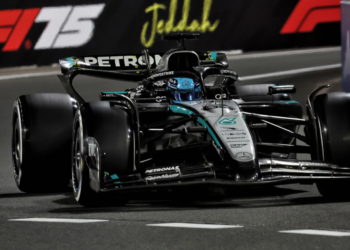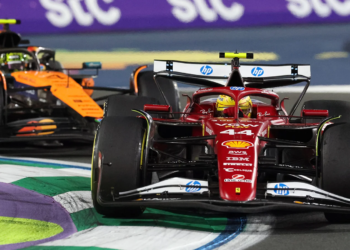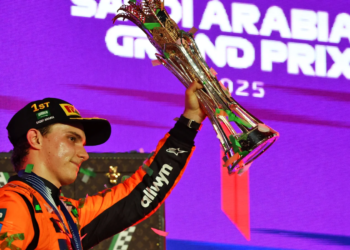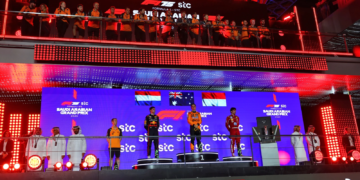Formula 1 made its fifth visit to Jeddah for the Saudi Arabian Grand Prix, and whilst, like Bahrain, the race may not have been a classic, the weekend produced enough topics to instigate discussion, which Motorsport Week has for you here.
The McLaren ownership of the season so far continued with Oscar Piastri taking victory, after a tense battle with Max Verstappen for the win.
We saw Charles Leclerc assume more authority over Lewis Hamilton with a podium, with other drivers seemingly finding their feet for the first time this year, but also struggling in the conditions when it came to overtaking.
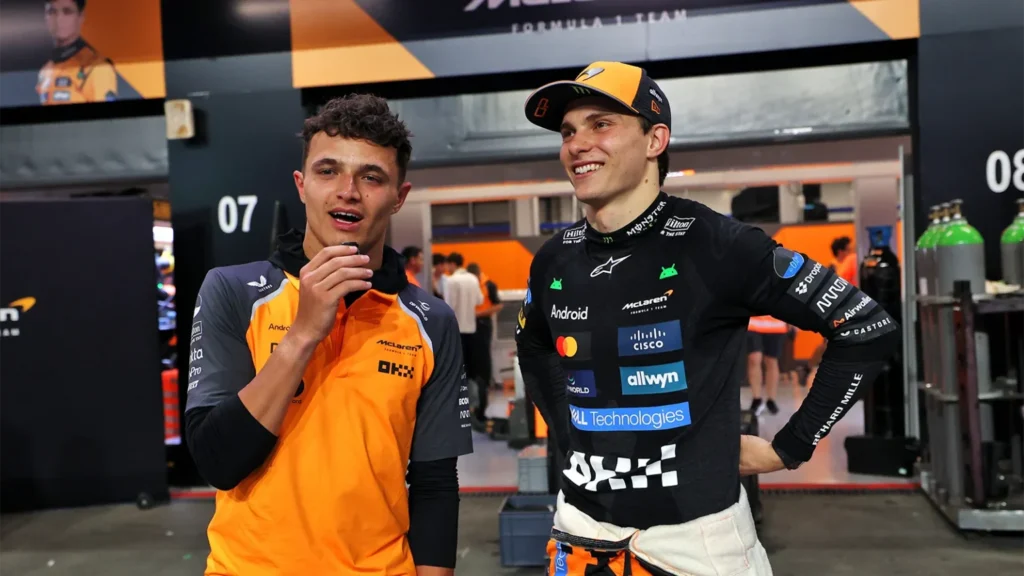
Is Piastri now the title favourite?
The weekend must surely have been another confidence-knocker for Lando Norris.
Going into the weekend, Norris was very honest in terms of struggles with the MCL39, but after free practice, it looked as if he had, quite literally, turned the corner.
However, he could not turn the fourth corner of the Jeddah Corniche Circuit, which sent him into the wall, and into 10th place on the grid.
Despite a fine drive which saw him finish fourth, his team-mate Oscar Piastri assumed the narrative and claimed the win, putting him in the lead of the F1 Drivers’ title.
The Aussie’s assured performance and unwillingness to yield to the challenge of Max Verstappen will surely give onlookers the firm impression that he is now the man at McLaren.
It must surely be disconcerting for Norris that Piastri has, in two-and-a-bit seasons, reached the same level as he has in six seasons, and now appears to be a little bit ahead.
If Norris can finally wrestle his issues with the car successfully, he will be back in the hunt, but for now, Piastri seems to be firmly leading the papaya charge.
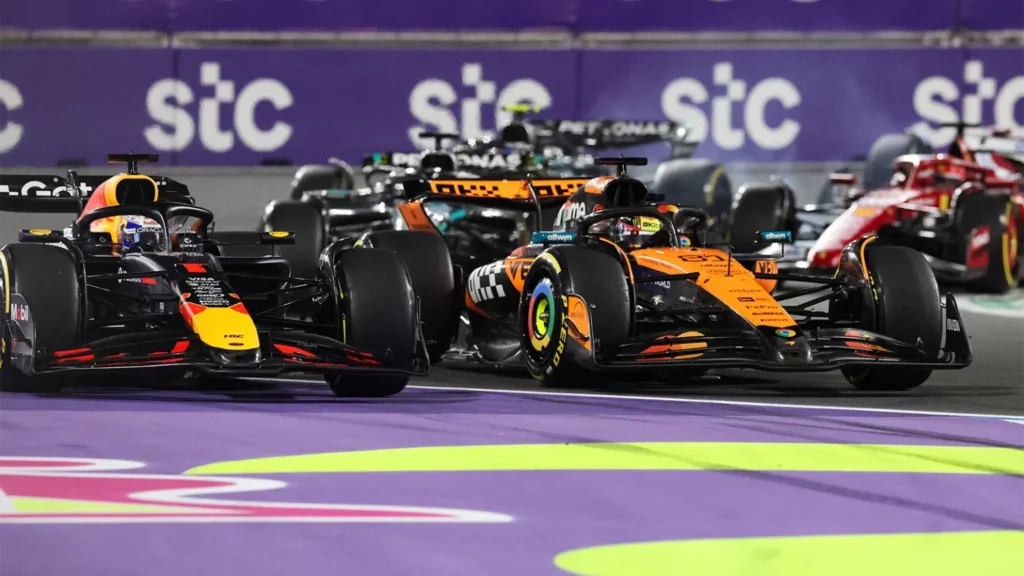
Does Verstappen have a right to feel aggrieved?
The race began in controversial circumstances, with Max Verstappen refusing to budge with Piastri breathing down his neck from the moment the lights went out.
As Piastri looked to the inside of the Red Bull at Turn 1, Verstappen opted to avoid contact by taking to the tarmac run-off area, which incurred the inspection of the stewards.
Eventually, they decided a five-second time penalty was the worthy of the manoeuvre, which ultimately cost him the win, as he finished just two seconds behind Piastri at the finish.
After the race, Verstappen told media including Motorsport Week that “it’s better not to talk about it,” insinuating that discussion was a waste of time.
Team boss Christian Horner went a step further and attended another media session after the race with print-outs of the onboard footage of the incident, believing it showed that his driver was adjudged harshly.
Opining that appealing would have been pointless as the stewards saw it as a “slam dunk,” Horner still protested his driver’s innocence.
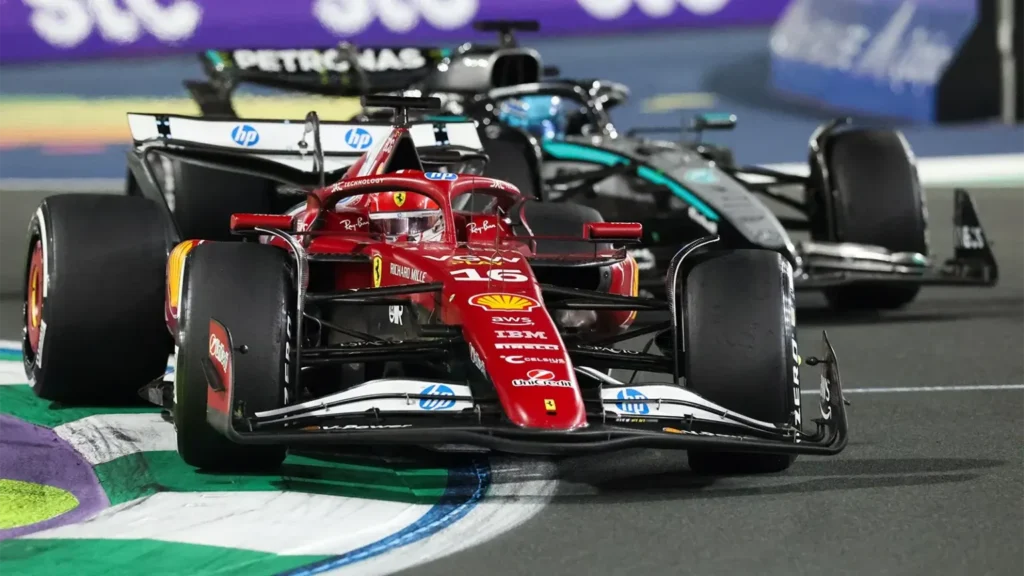
Can Ferrari press on from morale-boosting podium?
Ferrari had reasons to be cheerful, with Charles Leclerc bagging a podium after a sterling drive.
Keeping his Ferrari within 10 seconds of Piastri at the finish, Leclerc was able to extract the maximum from the struggling SF-25, drawing a lot of plaudits for his efforts.
There are a plethora of tracks coming-up where one-lap pace is even more essential for a good Grand Prix result.
And with Leclerc’s ability to produce the goods in qualifying, there is hope for the team that more podiums will be in the offing.
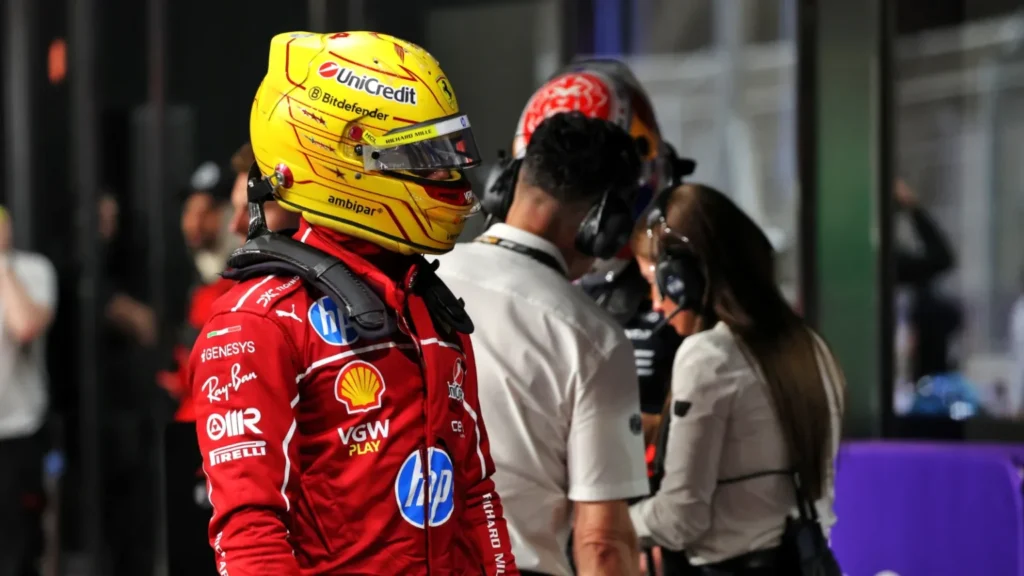
Hamilton’s struggles reminiscent of Mercedes woes
After a positive display in Bahrain, Hamilton’s demeanour was far more glass-half-full, and seemingly a sign that he was finally on top of the problems dogging him so far.
However, Saudi sent him back to square one. After just dodging a Q1 exit, Hamilton laboured to a seventh place in qualifying, ending-up over five tenths slower than Leclerc.
And in the race, he would finish just over 30 seconds behind Leclerc, holding on to that seventh place.
He would summarise the race as “horrible,” and “not enjoyable at all,” lamenting the poor balance and lack of pace.
It appears that much of the troubles he is enduring right now are similar to that in his final years at Mercedes, where one-lap pace was an issue, and finding cul-de-sacs when it comes to strategy.
George Russell finished above Hamilton twice in three F1 seasons as team-mates, and now it looks as if Leclerc might continue the run.
If Fred Vasseur agrees, then the pre-season talk about Hamilton being utilised as a team-player should he fall behind Leclerc might well become a reality.

Sainz back on track with Williams
Saudi was able to see an upturn in fortunes for one driver struggling so far this season – Carlos Sainz.
With Williams showing pace to firmly place itself in the midfield, Sainz has seen himself fall behind team-mate Alex Albon, with one fortuitous points finish in China scant consolation for a difficult start.
However, Sainz seemed more at one with the FW47 in Jeddah, and not only was he able to qualifying a brilliant sixth, he was able to finish ahead of Albon in the race too, holding off his late challenge to finish eighth.
It seemed that from the moment he signed with the team, Sainz was looked-to, as a proven race-winner, as a driver to help Williams elevate itself back to the big time, with results so far being underwhelming to say the least.
But if his Saudi performance sets the tone for the races to come, Sainz’s season has well-and-truly begun.
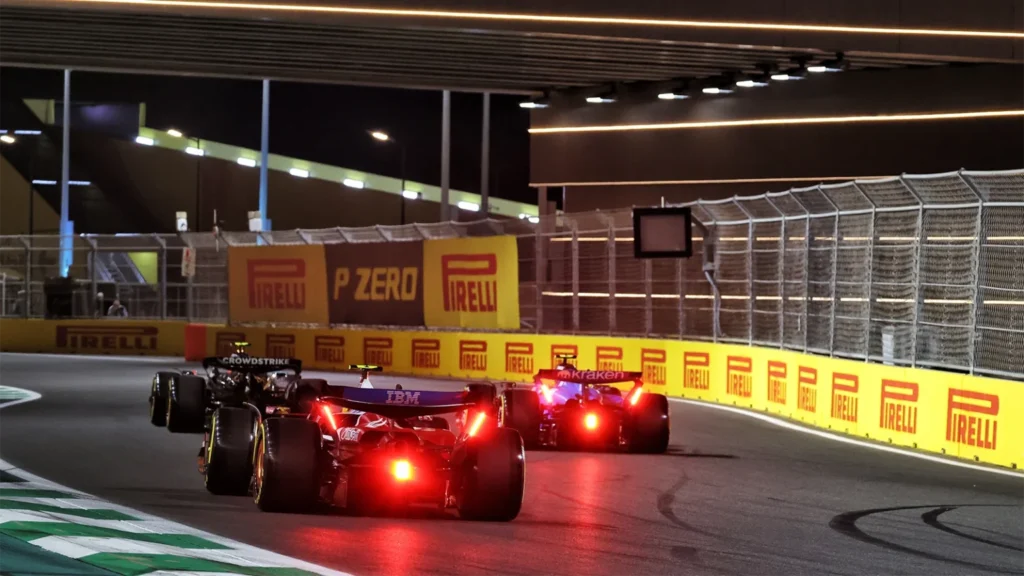
The F1 overtaking problem on show again in Saudi
As seen in other races in recent history – and already this season – the performance in qualifying has become even more important.
Track position is king, particularly now as drivers become stuck in the dirty air of the cars in-front of them, and puts racing at a premium, with huge chunks of the races being, for the most part, organically uneventful.
F1 is now stuck with its regulations for 2026 and the ensuing years, which might appease many OEMs, but might make fans inclined to worry.
Many motor racing fans have suggested that, compared to F1, Formula E sets a good example with many races being unpredictable, with some of that down to circuit and car size being conducive to entertainment.
F1 cars are a lot bigger than they used to be, which is rendering many tracks that were once favourites – Imola, anyone? – difficult to justify in terms of their places on the calendar.
The Jeddah Corniche Circuit provides a unique challenge in many aspects, but with another race won partly down to qualifying and strategy, the question must be asked as to how this problem can be eradicated.
READ MORE – Oscar Piastri assumes F1 championship lead with Saudi Arabian GP victory




